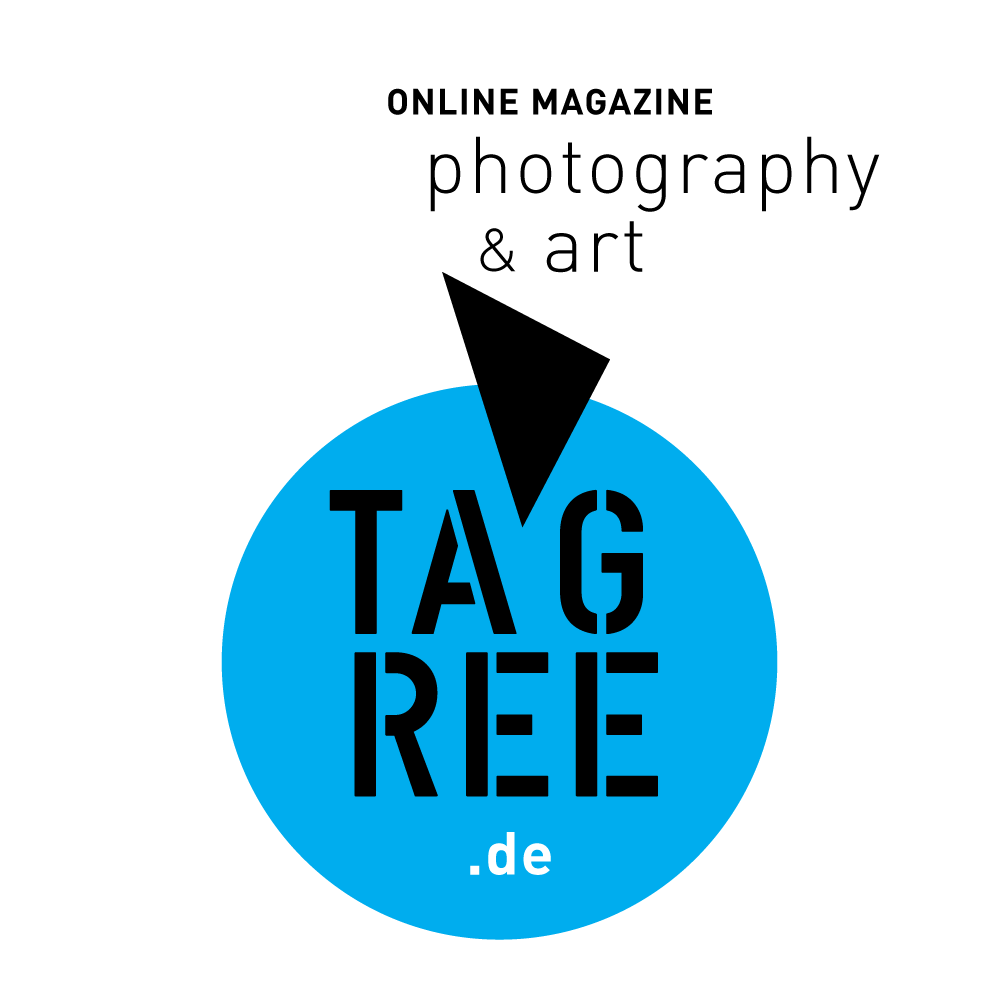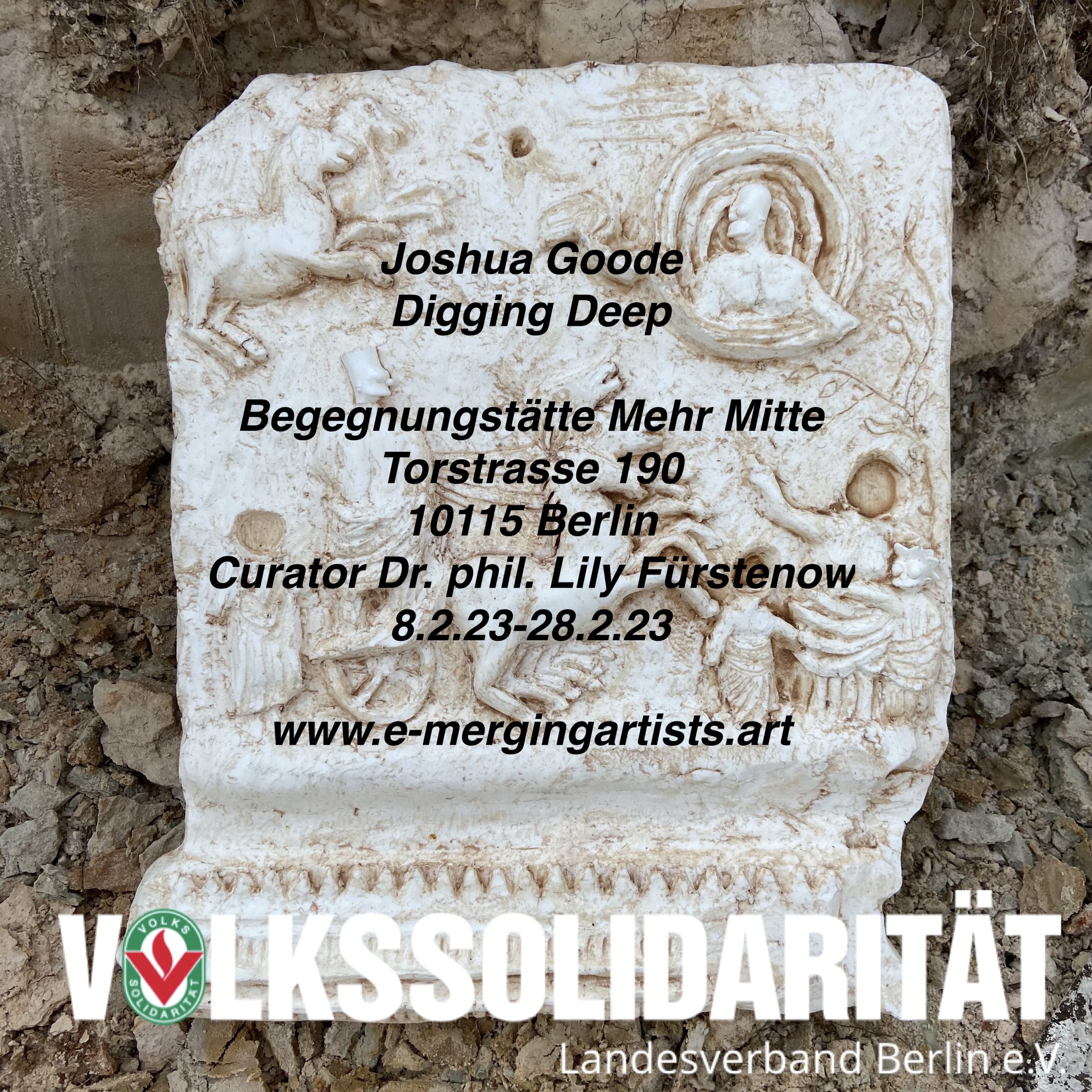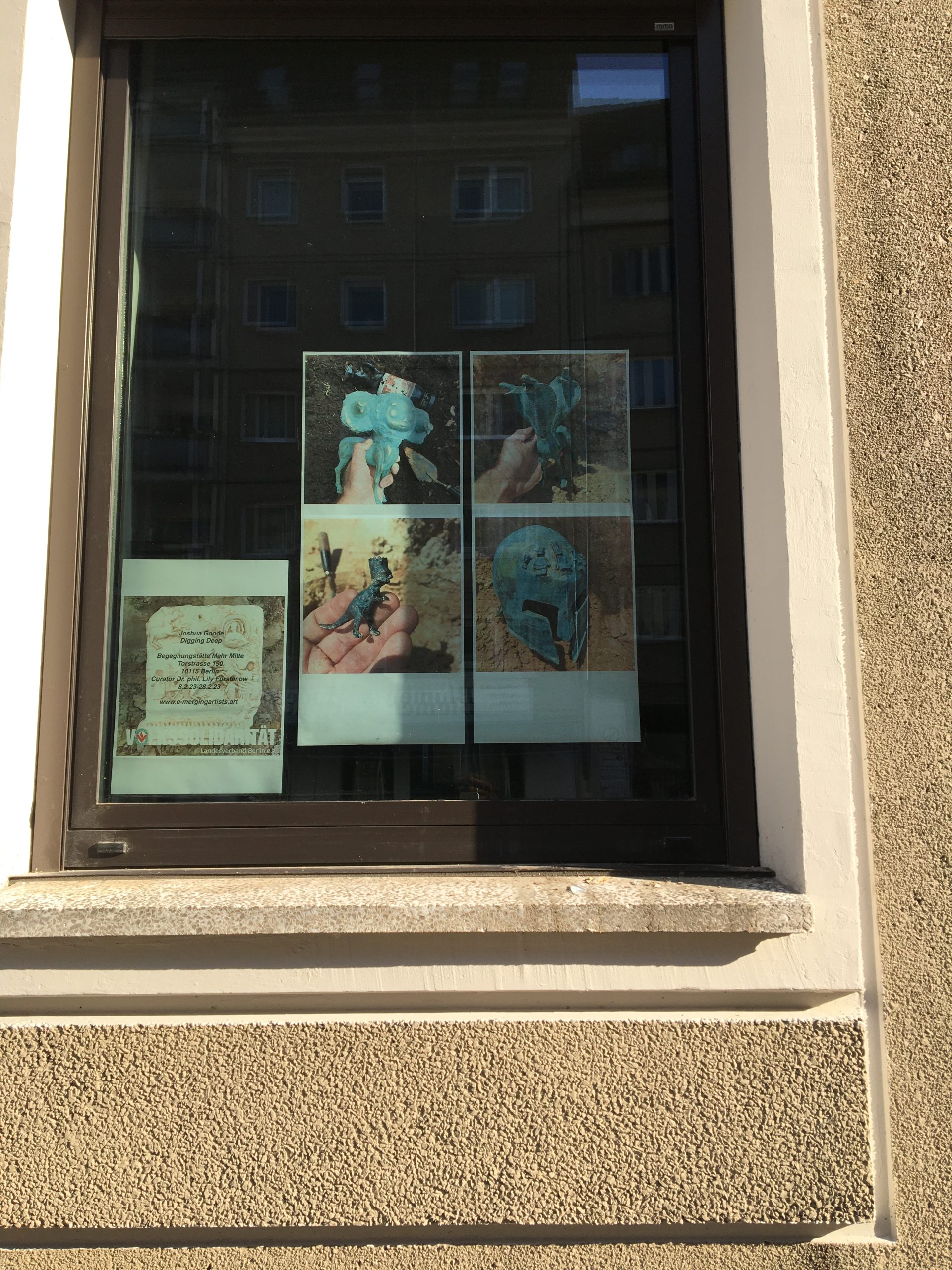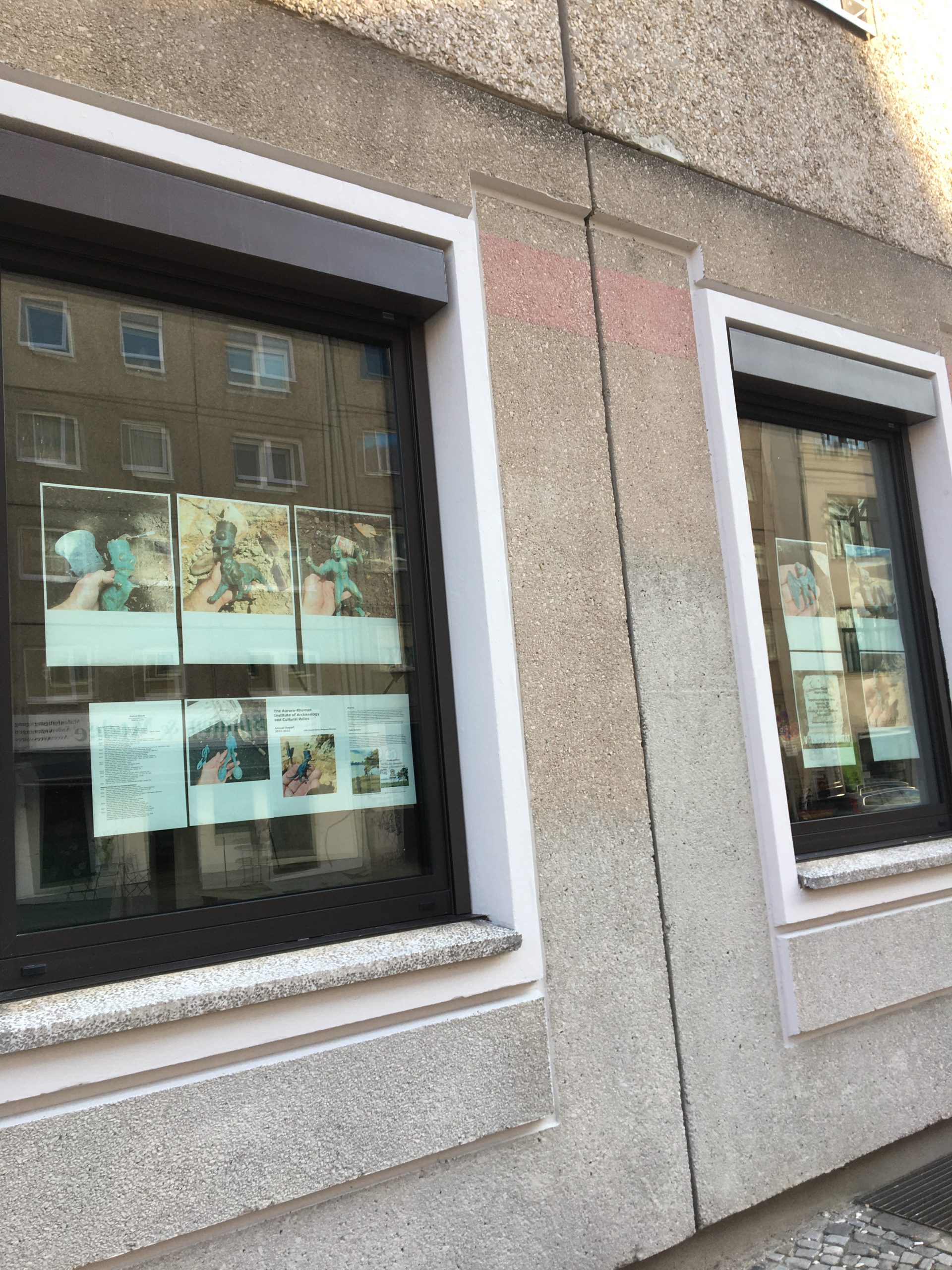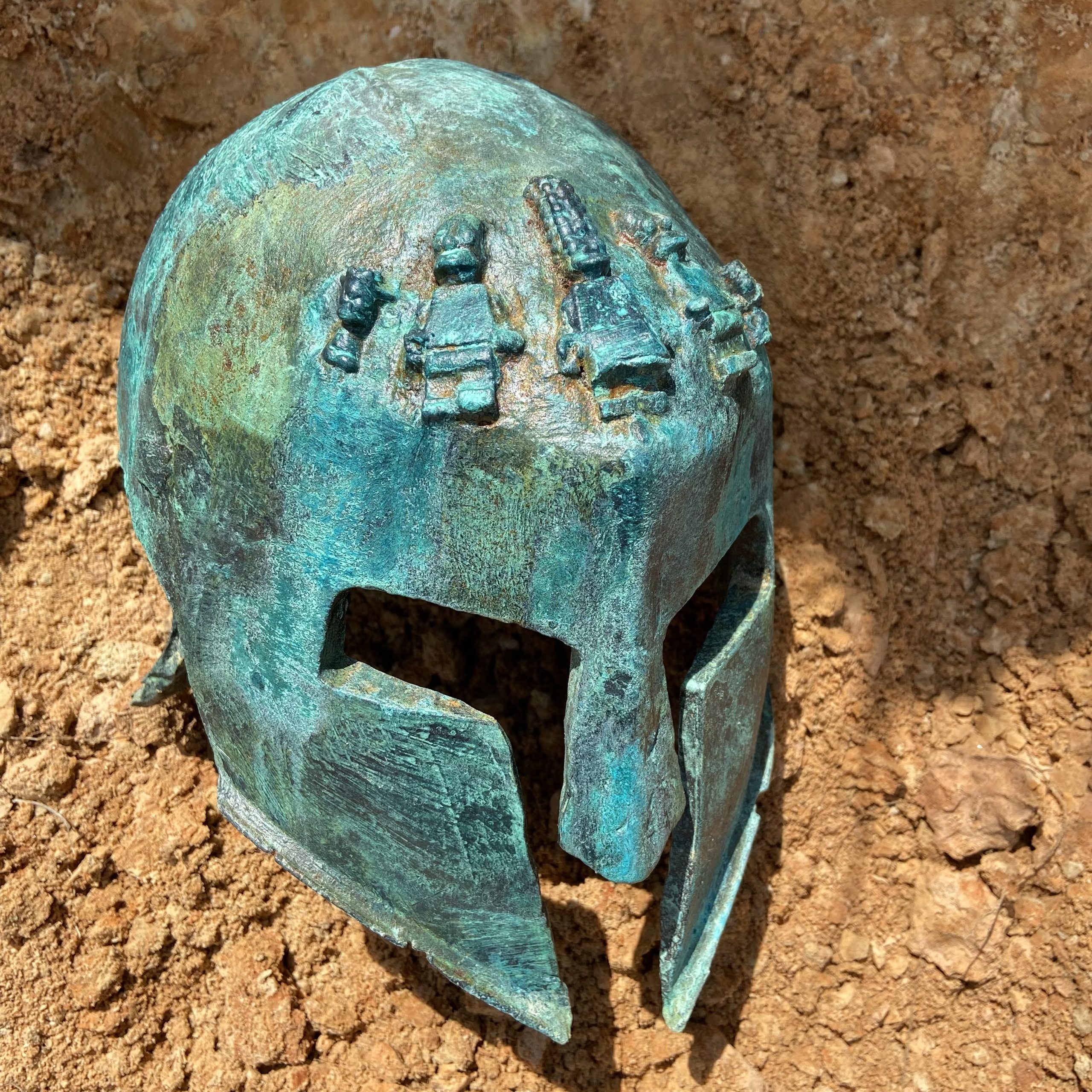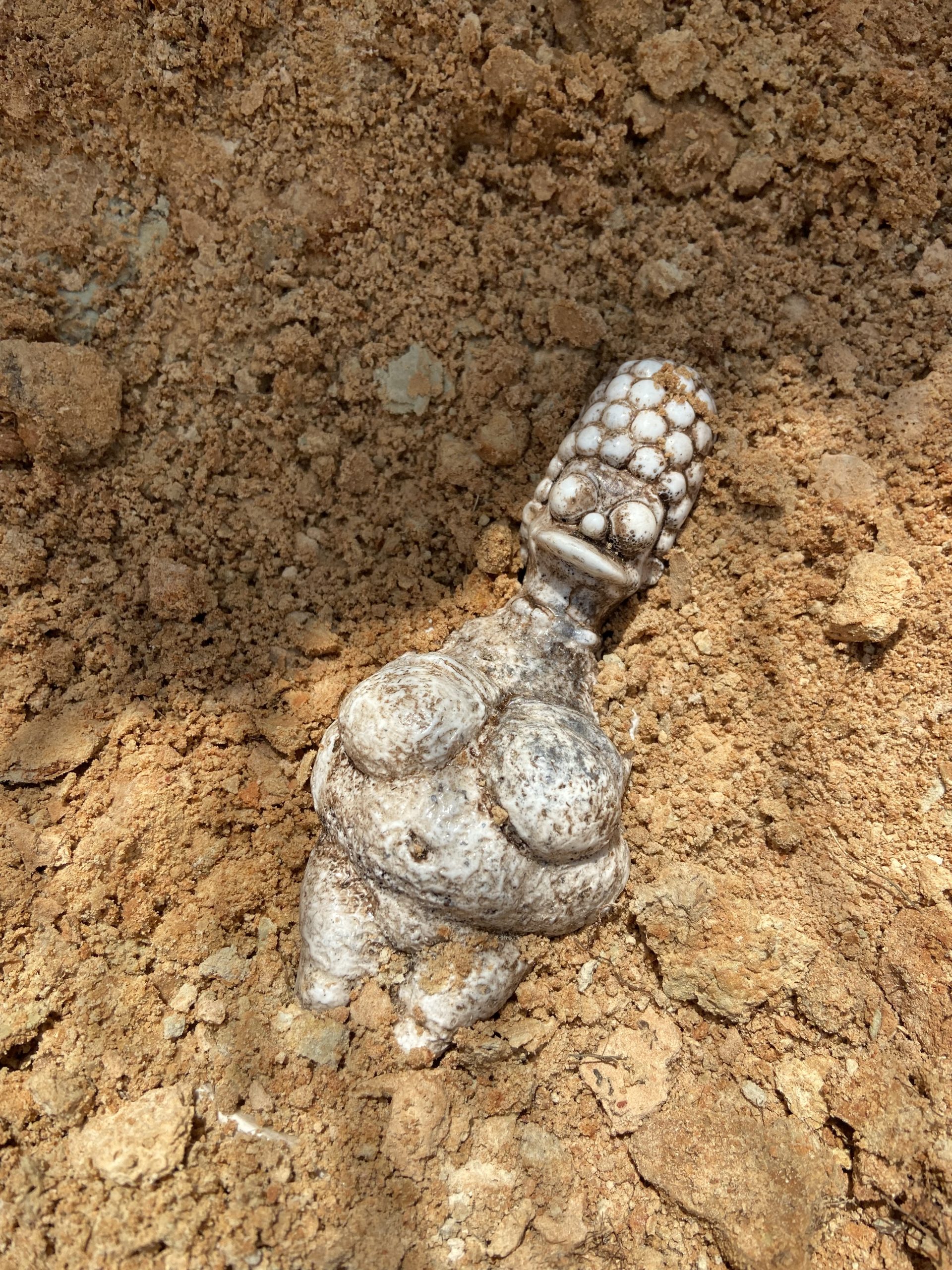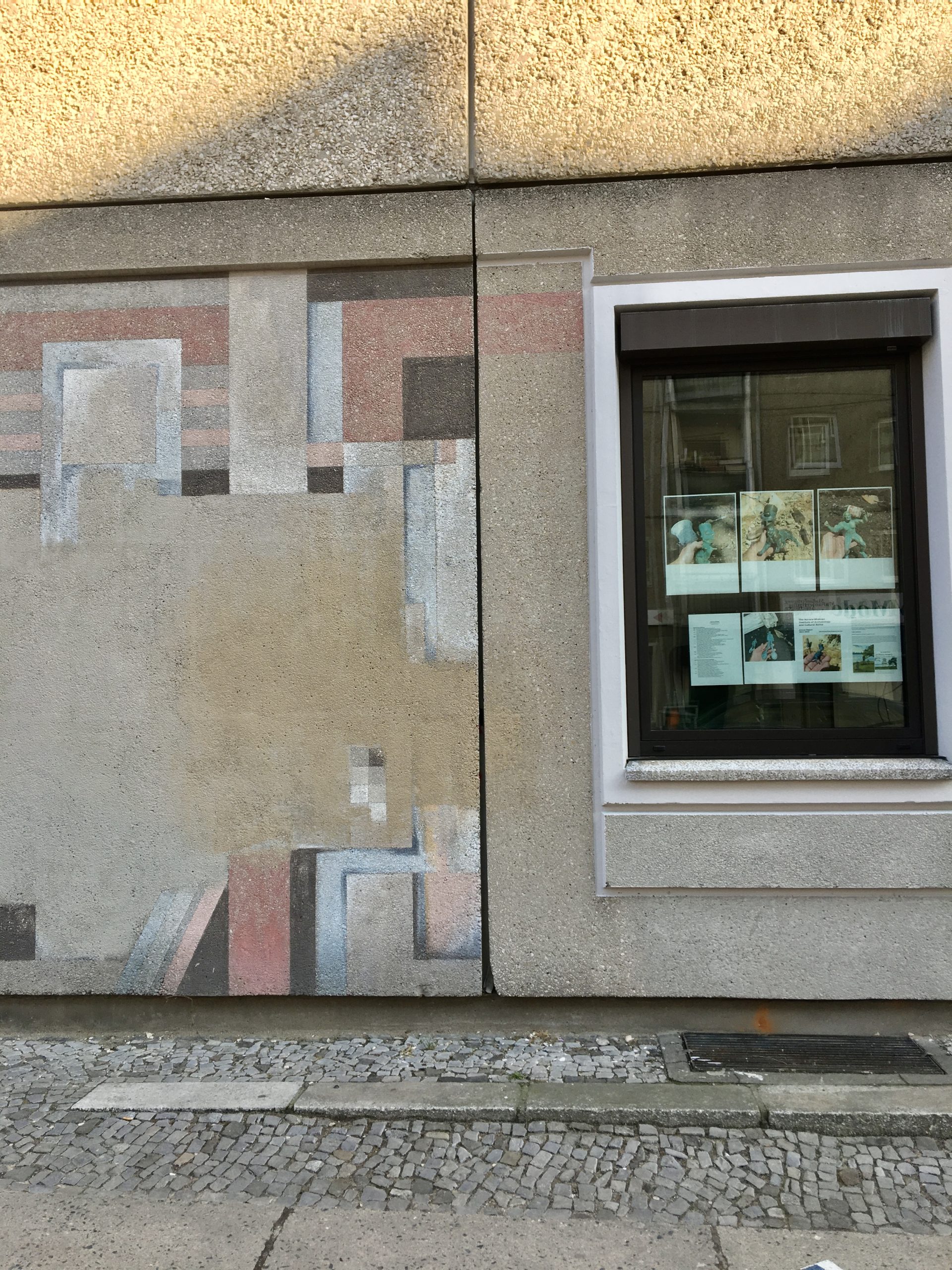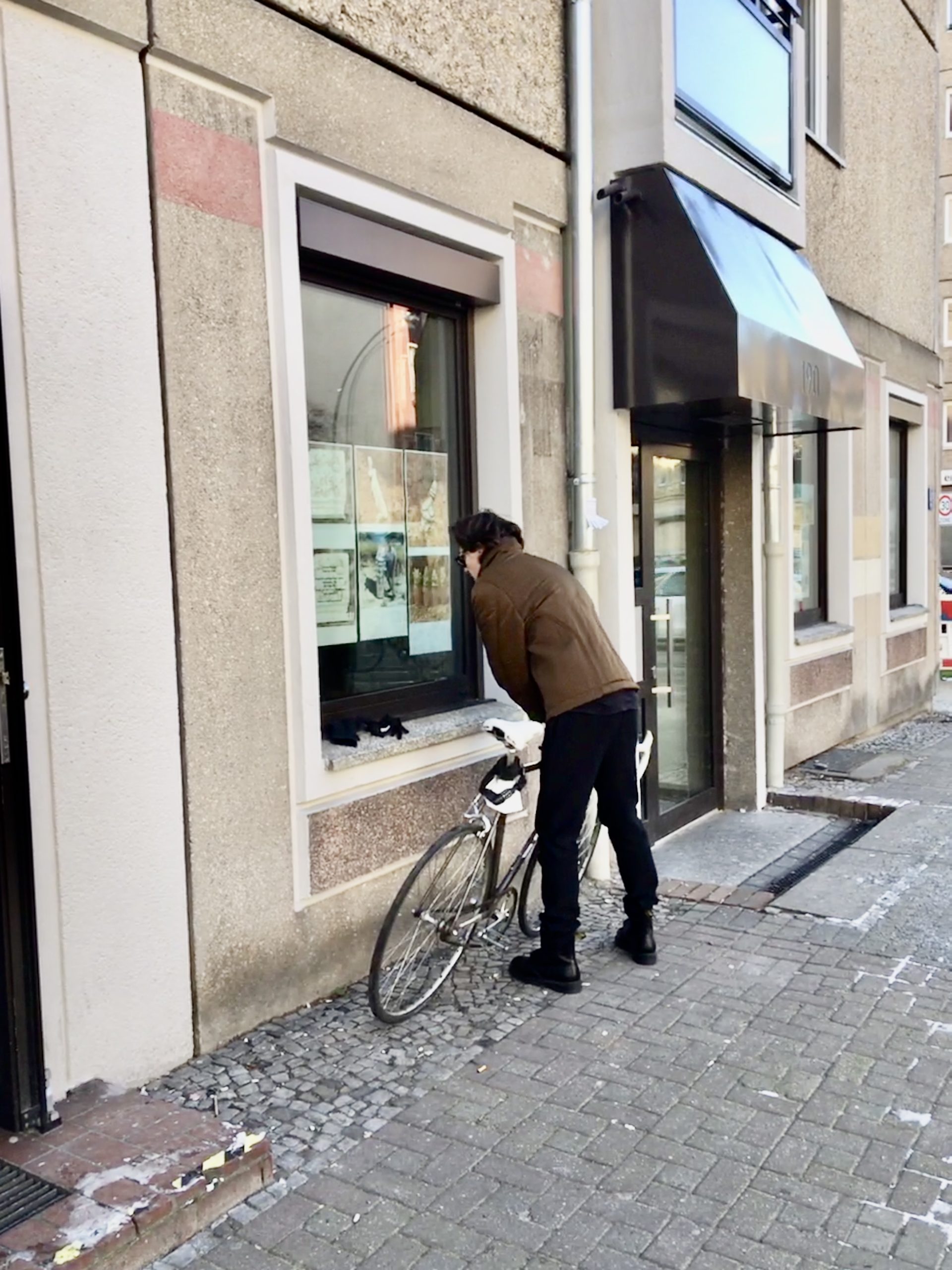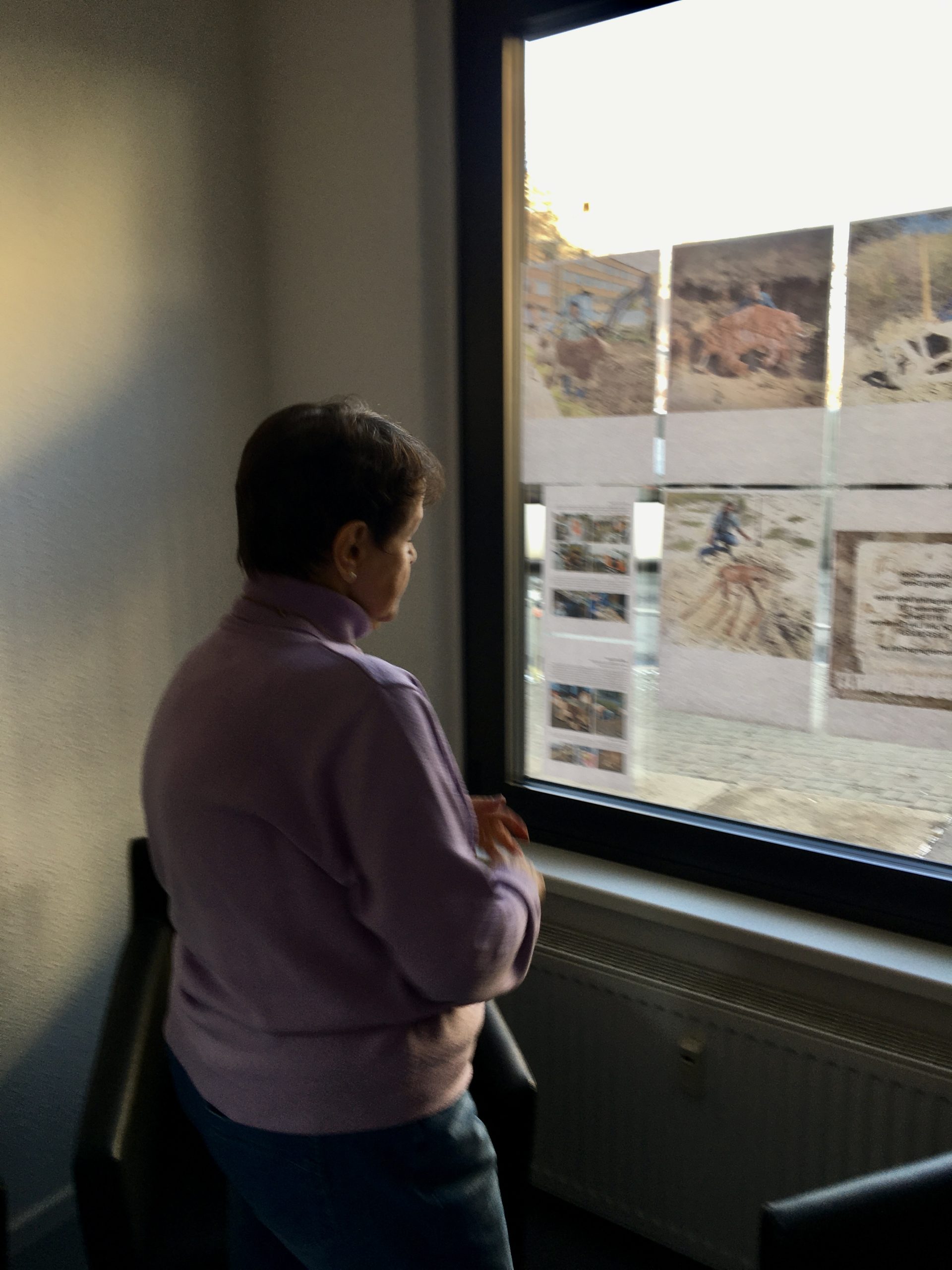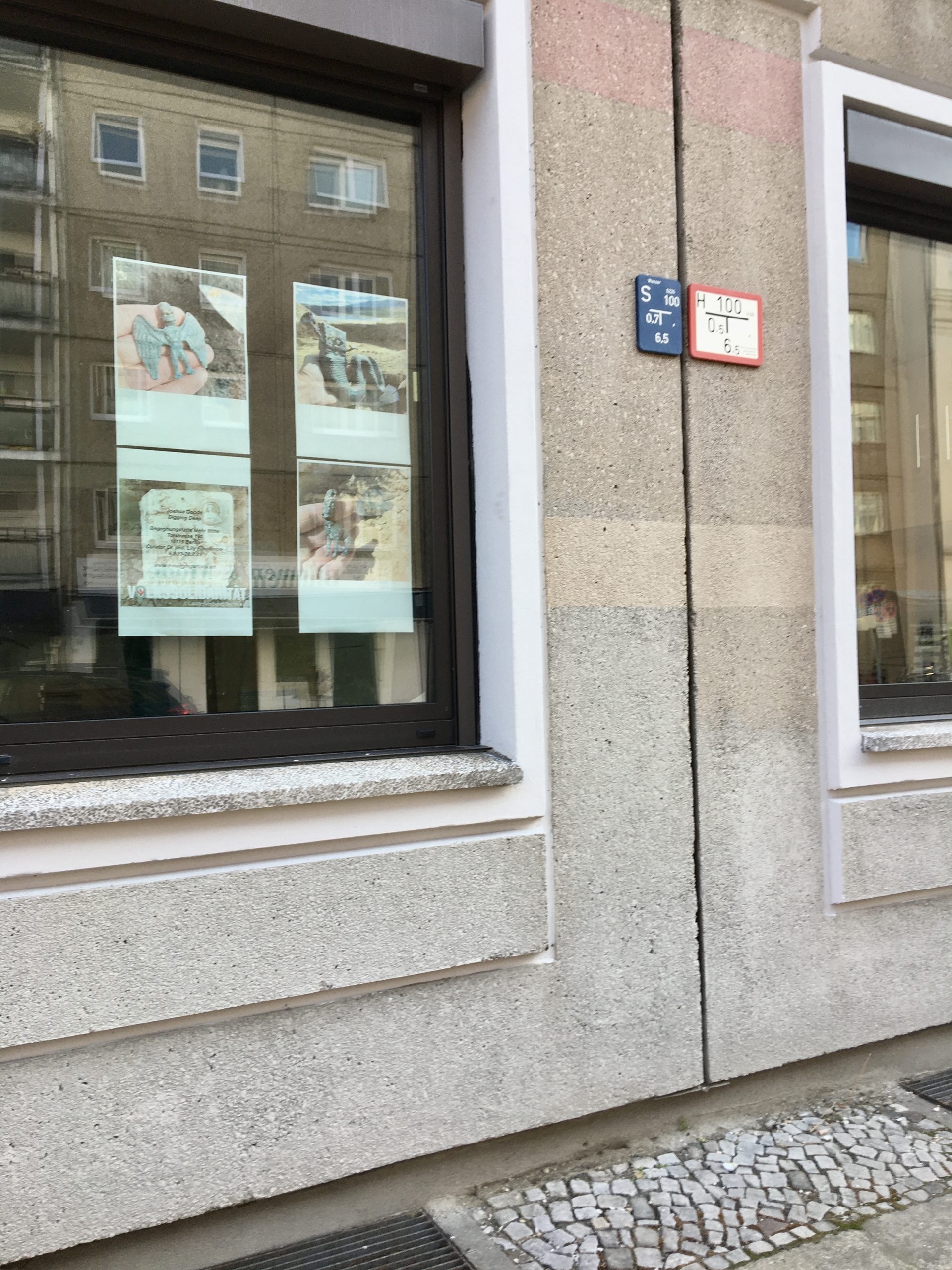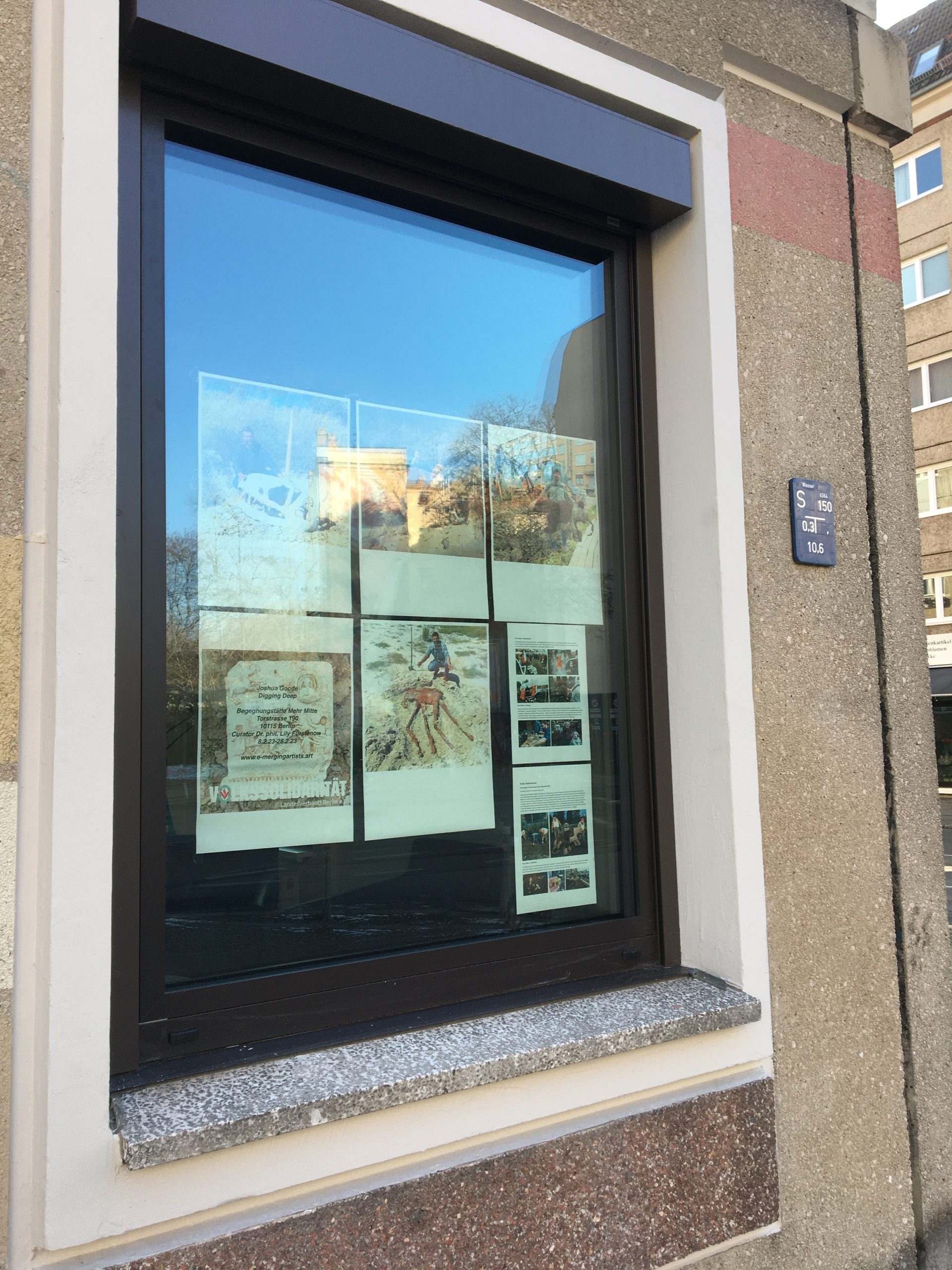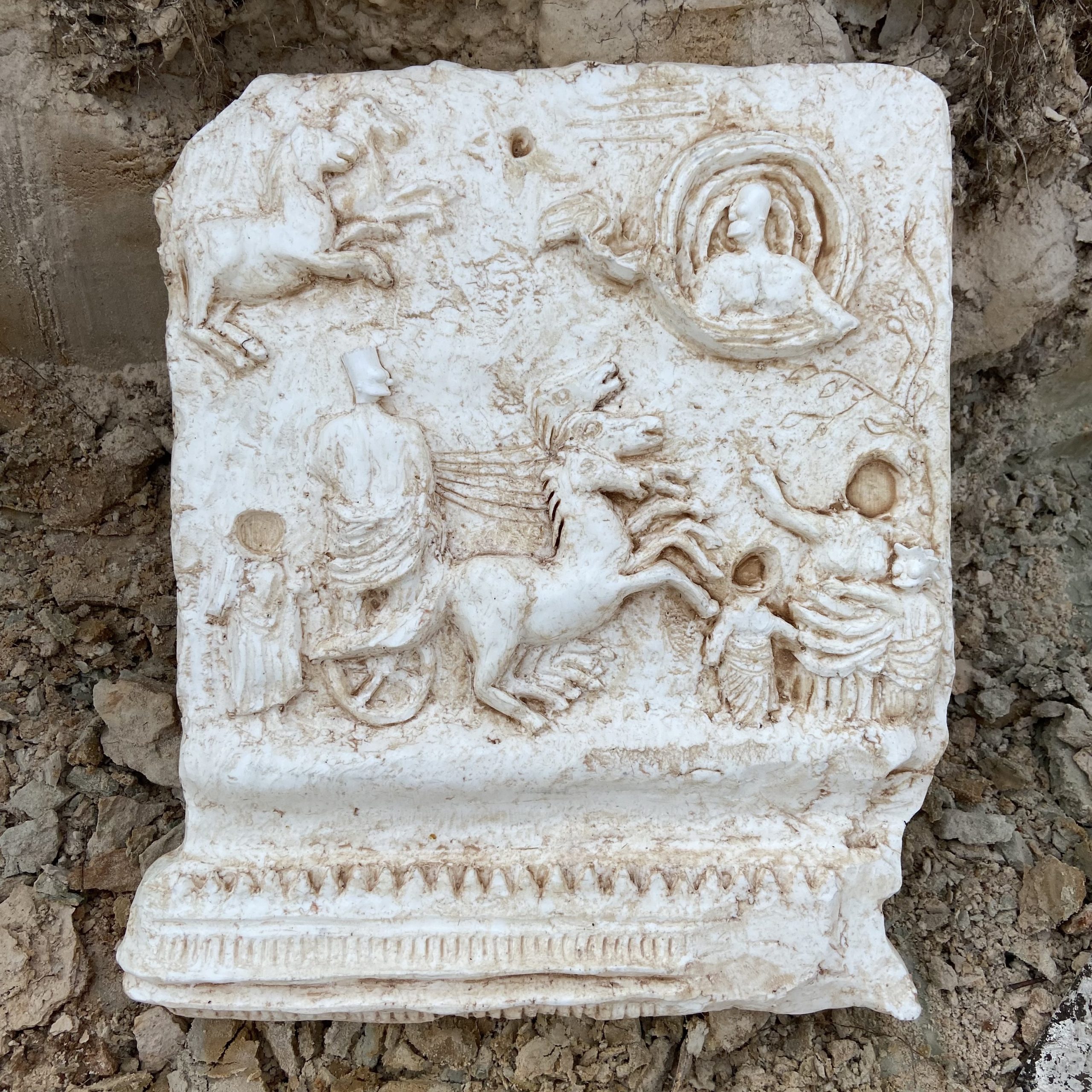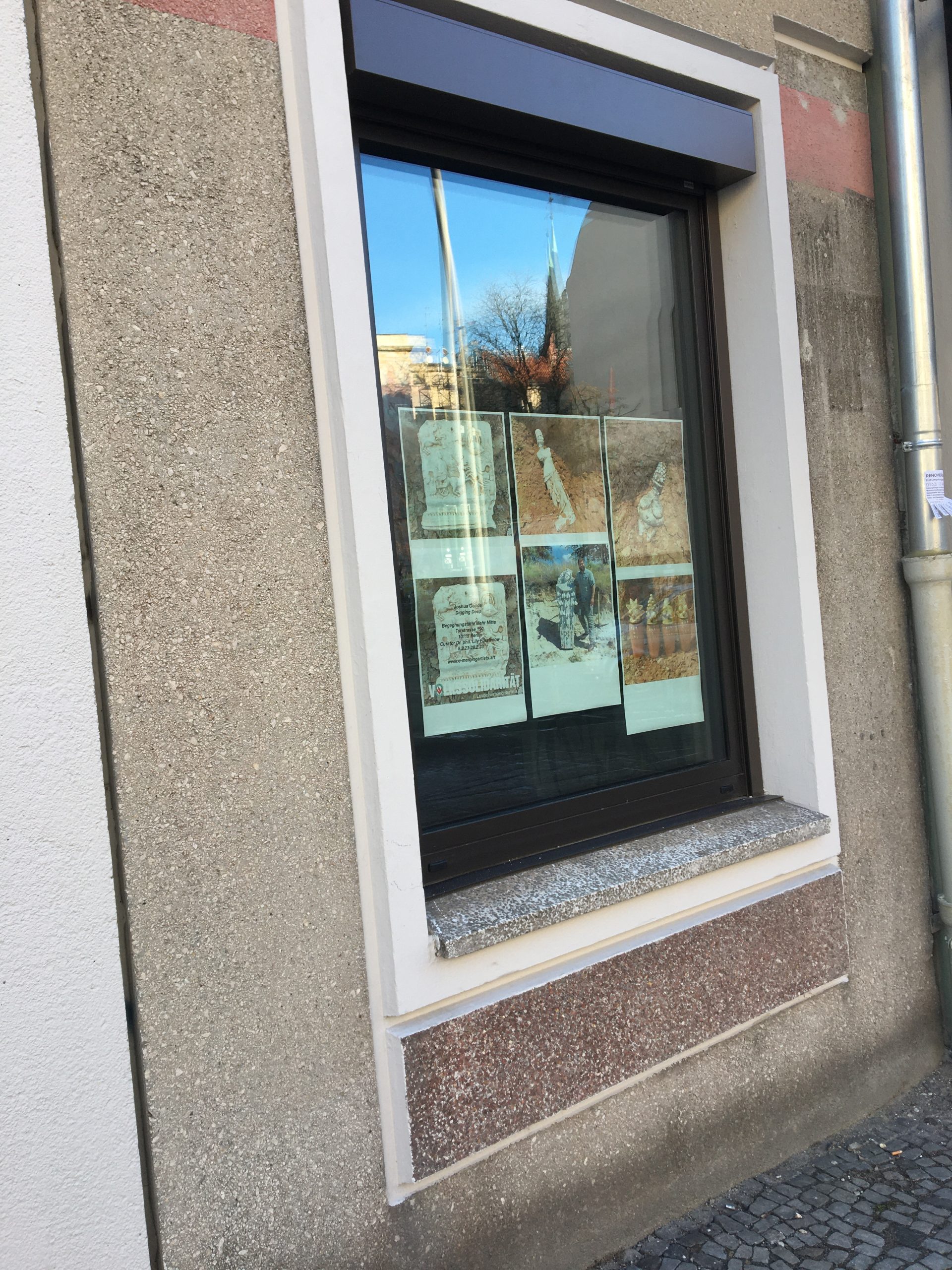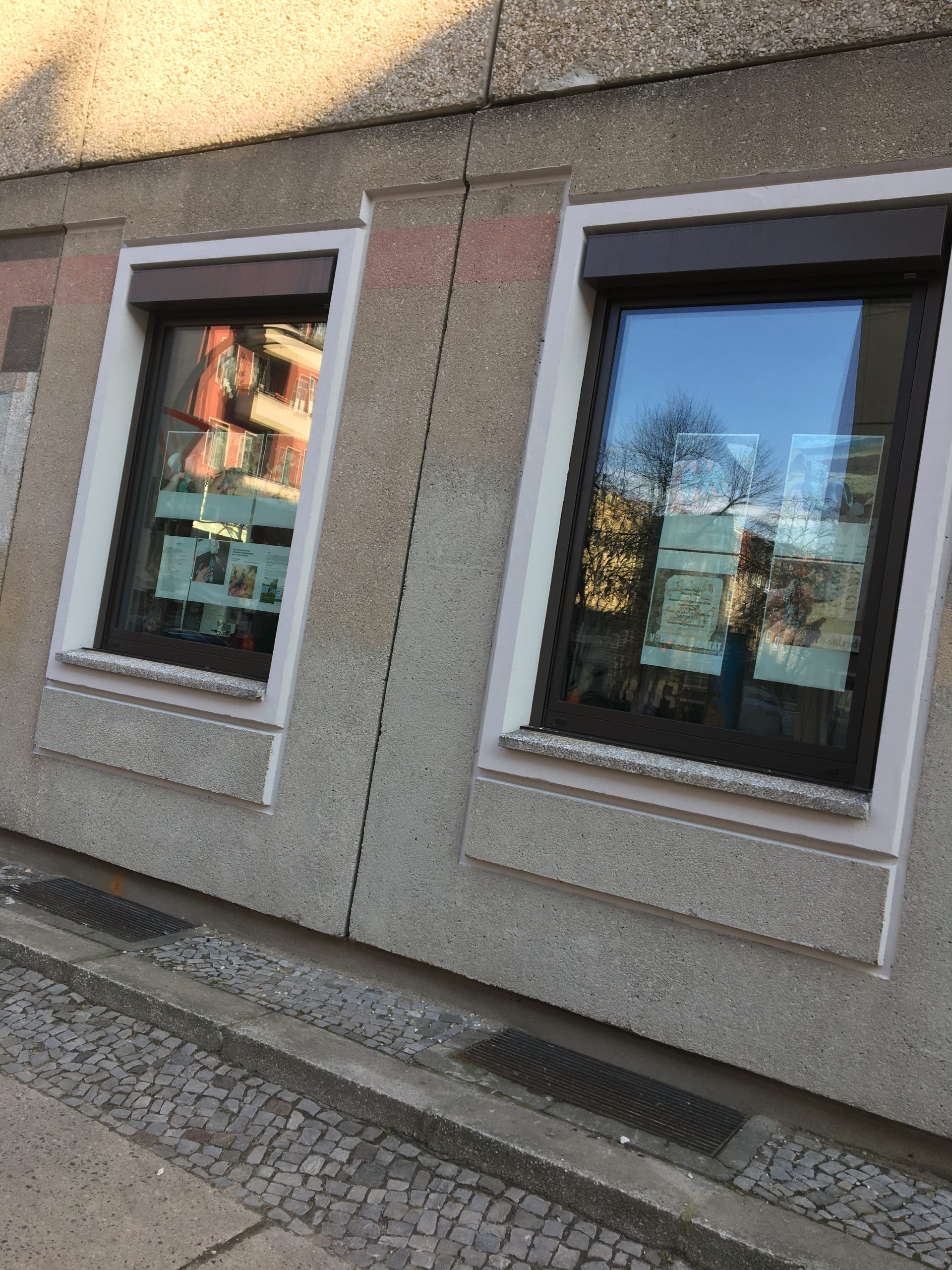Joshua Goode
Digging Deep
Begegnungstätte Mehr Mitte
Torstrasse 190
10115 Berlin
Curator Dr. phil. Lily Fürstenow
8.2.23-28.2.23
Art in Public Spaces
ARE/Artistic Research Encounters. We ARE research.
Exhibition duration:
8.2.23-28.2.23
Digging into the Past
Text. Dr. phil. Lily Fürstenow
A critical revision of mankind’s history of science and knowledge is an undertaking that is always worth it. What we know of our past reveals much about who we are. In artist Joshua Goode’s performative archaeological excavations where local populations are invited to participate even amateurs get a chance to contribute. Exploring the past as an adventure that is irrevocably connected to our present enables us to rethink our contemporary culture by comparing it to ancient mythologies, rituals and ways of their preservation for posterity. Joshua Goode’s sculptures made of bronze, stone, rezin imitating marble, his fake maps with obliterated pop-culture cartoon characters are playful citations of centuries old tradition of sculpture coming from prehistoric times merged with everyday contemporary cartoon protagonists whom we know from TV and other media. His works are inspired by motives from antiquity topped by immediately recognisable contemporary late 20th century American pop culture imagery in an attempt to bring the two together, to find the common grounds between the so called high culture and pop. Undaunting and challenging these artefacts and collectibles as the artist calls them question if there exists a divide between the high and low culture and if in the long run we can from our contemporary standpoint define which art and cultural products will stand the test of times and prove themselves to be the true works of art as the likes of Venus and Medusa accepted as art canon that the items of Joshua Goode’s making mockingly imitate.
Thus in a humorous way Joshua Goode’s artistic practice analyses our cultural values, mankind’s collective unconscious posing the inevitable dilemma of humanities involvement with nature, climate and its influence upon geographies across the globe. Although many of Goode’s performative archaeological actions refer to ancient civilisations it’s always our contemporary culture that is scrutinised. For example, how are ancient rituals remembered and re-enacted? Or to what extent are ancient methodologies relevant to contemporary European and American societies?
Natural history and art museums are engaged in academic discourse, dealing with the collection preservation and display of historical artefacts. Yet museums often come across as elitist and exclusive missing the touch with grass-root populations and public at large. Joshua Goode’s performances on the contrary are all about inclusion and participation of people of all ages, where representatives of various cultures get the chance to come into contact and experience the past as an event, a spectacle and an action. One can’t help escaping here the inevitable problem of spectacularisation of science though.
Goode’s archaeological performances and workshops in Russia during the Ural Biennial in Siberia as well as in the city of Saint Petersburg attracting big crowds evidence enormous public interest in science, knowledge production processes and possibilities of staging of the past from our contemporary perspectives.
Last but not least natural history comes under Joshua Goode’s artistic scrutiny in an explorative and critical way. His staged performative excavations of extinct animals from prehistoric times throw a new light on our contemporary fascination with the bizarre, the monstrous and the abnormal. If in ancient times monstrosity was an omen of good luck contemporary societies’ morbid interest for mutants and accounts for contemporary culture’s spiritual impoverishment and the desperate hunt for publicity and scandal.
Pop culture icons covered with the patina of ancient times, cast in stone, marble or bronze are increased in size and installed in public spaces by the artist thus acquiring a unique aura of fake authenticity simultaneously analysing the process of cultural production from the futuristic perspective.
What will remain of our culture in retrospect? Will our civilisation be remembered and how? Can we influence what stays and what ends up in the cultural dump? Symbolically presenting Texas as the site of one of the ancient lost civilisations in spite of the fact that Texas has never been an archaeological destination famous for antique relics Joshua Goode’s artistic practice evidences that our knowledge of history is contingent, often politically biased, distorted by accident and anecdotes, driven by a whole set of economic processes beyond our reach and influence. For example, what accounts for the global popularity of characters from the US cartoons like Simpsons versus those sunk in oblivion and neglect? How consumption capitalism and contemporary revenue driven media would support and promote certain cultures and pop icons at the cost of others? What is worth of researching, collecting, preserving and exhibiting in museum collections in the long run? Joshua Goode’s artistic project offers a critical, often humorous and playful approach to our understanding of the present and peering into the possibilities for the future from multiple perspectives by digging into the past.

